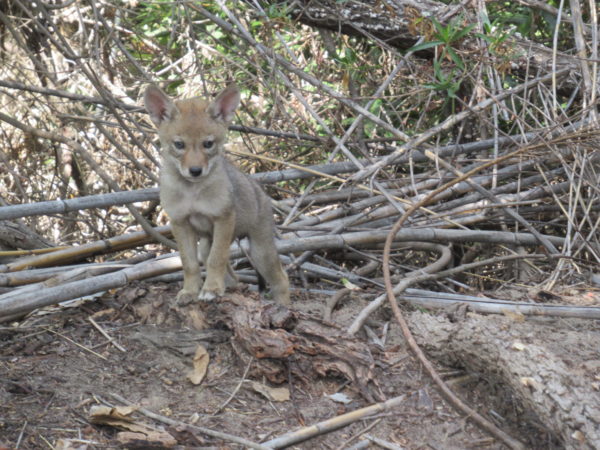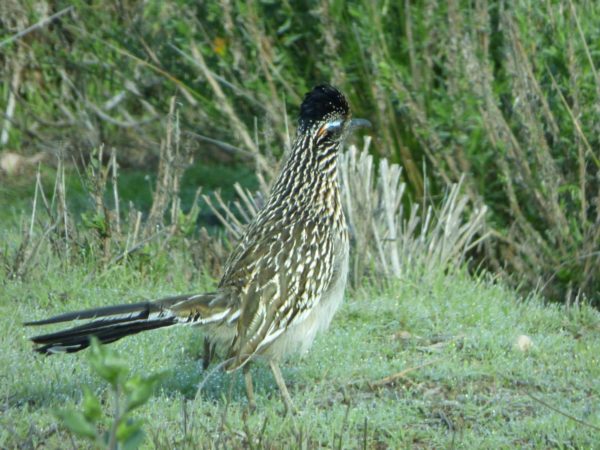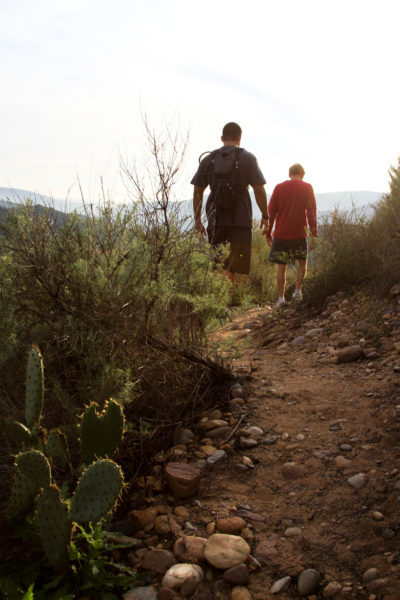We all love our open space. Whether it’s from the physical, mental, or spiritual aspect, everyone can benefit from the canyons. We are fortunate enough to have land managers like OC Parks who spend their days making sure our open space stays safe and protected for generations to come, and one of the ways they do that is through park rules.
Now, I know I didn’t follow all park rules before I started working for Laguna Canyon Foundation, and it wasn’t because I didn’t care – I just didn’t understand why the rules were in place and how little ol‘ me could have an impact on our canyons. But now I do, and I think most of you are in the same boat I was, so I thought I would try to help bridge the gap between words on a park sign and the meaning one takes from those words.
Here are some of the most commonly broken park rules and why they were enacted in the first place:
Dogs in the Parks
Of course we want to bring our four-legged family members on outdoor excursions – I know I do. It might even seem like it could be their “natural habitat!” So, why not just bring them with you, nobody will even know they were there…right? Not exactly. Dogs have the scent of a predator, meaning everywhere they walk, sniff, and relieve themselves leaves a path of warning to every animal in that area of the park. This disrupts natural cycles and even jeopardizes an animal’s ability to survive. They are now in defense mode instead of spending their energy and resources hunting or foraging for food.
You might be wondering: Well if the impacts are so great, why are some trails dog friendly? It’s because park staff know people want to experience the open space with their furry friends. So by limiting dog access to just specific trails in Aliso and Wood Canyons, they can concede to user experience while containing wildlife impacts. They picked trails with the least sensitive habitat that already had established human impact. Once animals sensed the ever-present threat of canines, they moved to other areas of the park.
So even though it breaks my heart to leave my pup at home, I take solace in the knowledge I am saving that bobcat, fox, or roadrunner from unnecessary stress and I hope you will too.
For more information about dogs on trails, a map showing dog-friendly trails, and safety concerns, click here.
Unauthorized Trail Use
How can you tell if a trail is authorized or unauthorized? Authorized trails have a post at each end.
I know the feeling of looking down that mysterious trail and wondering where it goes. Who doesn’t like to get a little lost? Plus, who would care? The trail is obviously already built and used, what is one more person…This was exactly the thought process I needed to overcome, because if I was thinking it, others were too. Using unauthorized trails causes damage to the surrounding vegetation, disturbs wildlife, and shows other park users they can do it too – especially if it’s posted on social media. I couldn’t imagine being in my home and having a scary-looking creature pass through my house! Unauthorized and social trails do just that: kill off native plants and disrupt animals to the point where they relocate to another undisturbed section of the park, which is becoming increasingly difficult to find.
There’s another problem unauthorized trails cause: small-scale habitat fragmentation. Think about what large freeways and developments do to animal species in our open space. It divides them. Meaning deer, coyotes, foxes, and bobcats in our two parks have a very small chance of diversifying their gene pools with the animals in the Santa Ana Mountains. It is the same with our trail system. It divides habitats. Animals shy away from human presence; our scents and activities on trails are a clear signal to stay away. If people continue to build and use unauthorized trails, it forces animals in our wilderness to compete for the remaining “wild” areas, which are now segmented throughout the park.
Trails are also “dead zones” where nothing grows. We have 70 miles of legal, authorized trails in Laguna Coast Wilderness Park and Aliso and Wood Canyon Wilderness Park – that is the equivalent of 28 football fields of compacted dirt where nothing can grow. It seems like a lot of space has already been legally provided for us. Let’s enjoy our marked trails and keep our wildlife happy.
Trash on Trails
Thankfully, not many people purposefully leave trash on trails, but there are many opportunities to avoid leaving something behind. For instance, that empty water bottle or used doggie bag left on the side to be picked up on the way back is often forgotten. Fruit rinds, peels, and nut shells might seem like safe things to throw out into the wilderness – but actually end up being harmful to wildlife. Feeding wildlife damages health, alters natural behaviors, and exposes them to other dangers. Anything that goes on the trails with us should come off the trails with us.
Trail Etiquette
I’ve noticed some recent social trends that could become harmful, so I thought I would include some other tips about park use, even though they are not rules per se.
- If in groups, don’t block the entire width of the trail.
- Stay to your right.
- When biking, slow down as you pass people and use a bell or your voice around blind turns.
- Use one earbud instead of two to stay aware of your surroundings.
- Sunscreen, a hat, and water are always a good idea.
My hope is that you won’t see park rules as the red tape trying to diminish your park enjoyment, but for what they truly are: the guidelines that, if followed, will give you and your descendants the ability to enjoy this open space for generations to come. After all, “we do not inherit the land from our ancestors, we borrow it from our descendants.” – Chief Seattle
#ProtectWhatYouLove





